The Glimåkra Standard makes this project a weaver’s dream. The time-tested loom operates without a glitch, doing everything I direct it to do. These Swedish looms are magnificently designed.
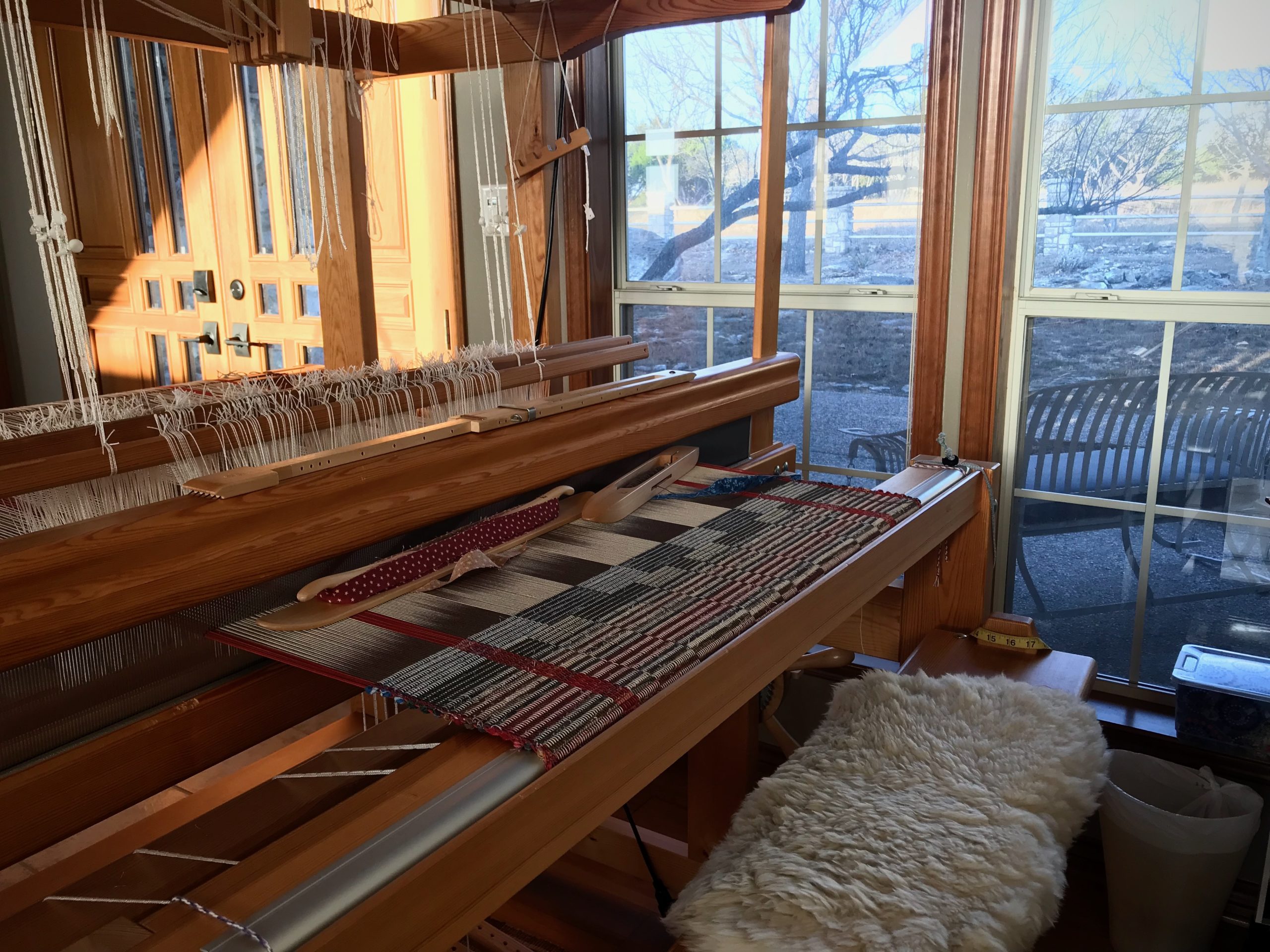
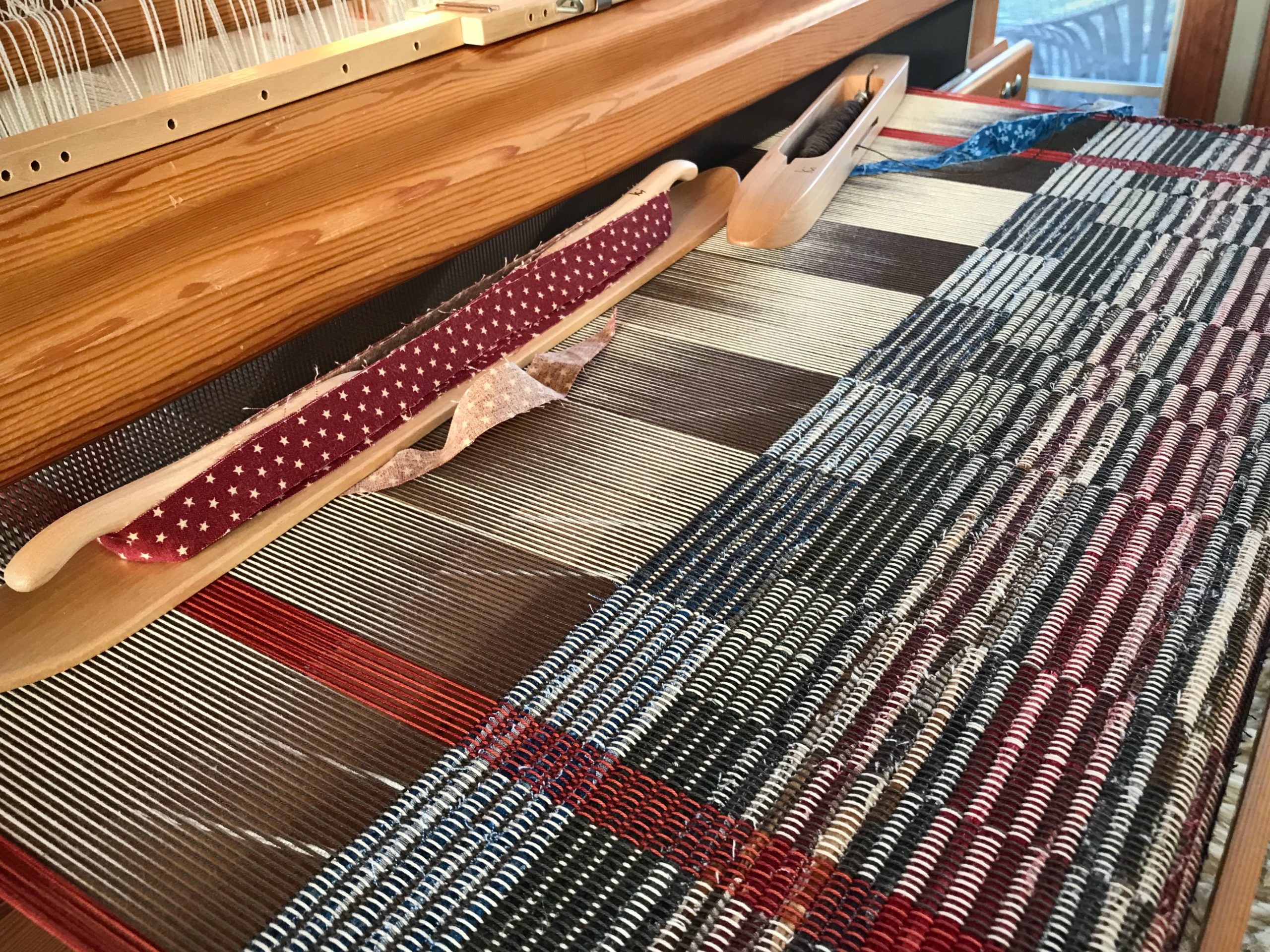
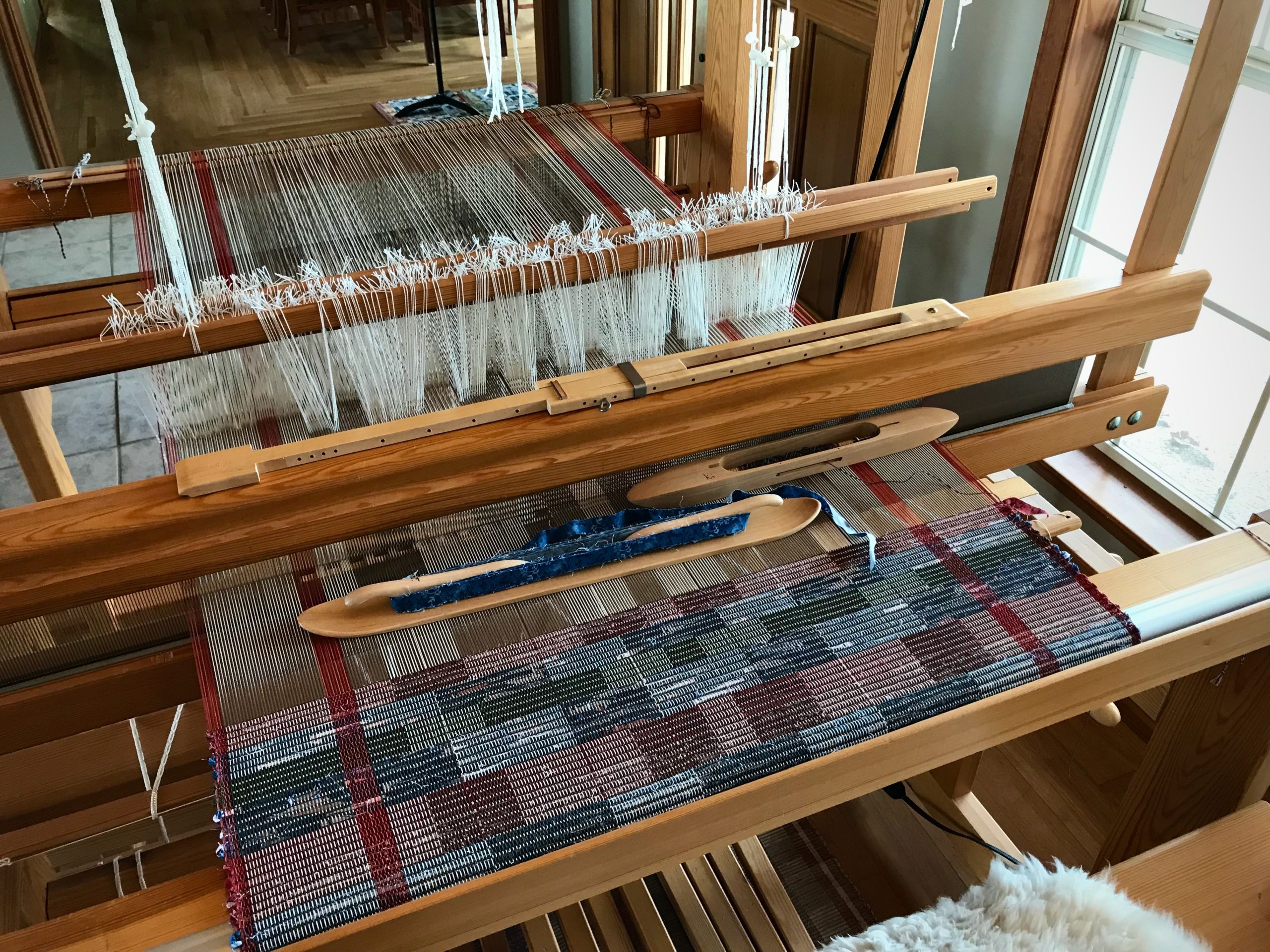
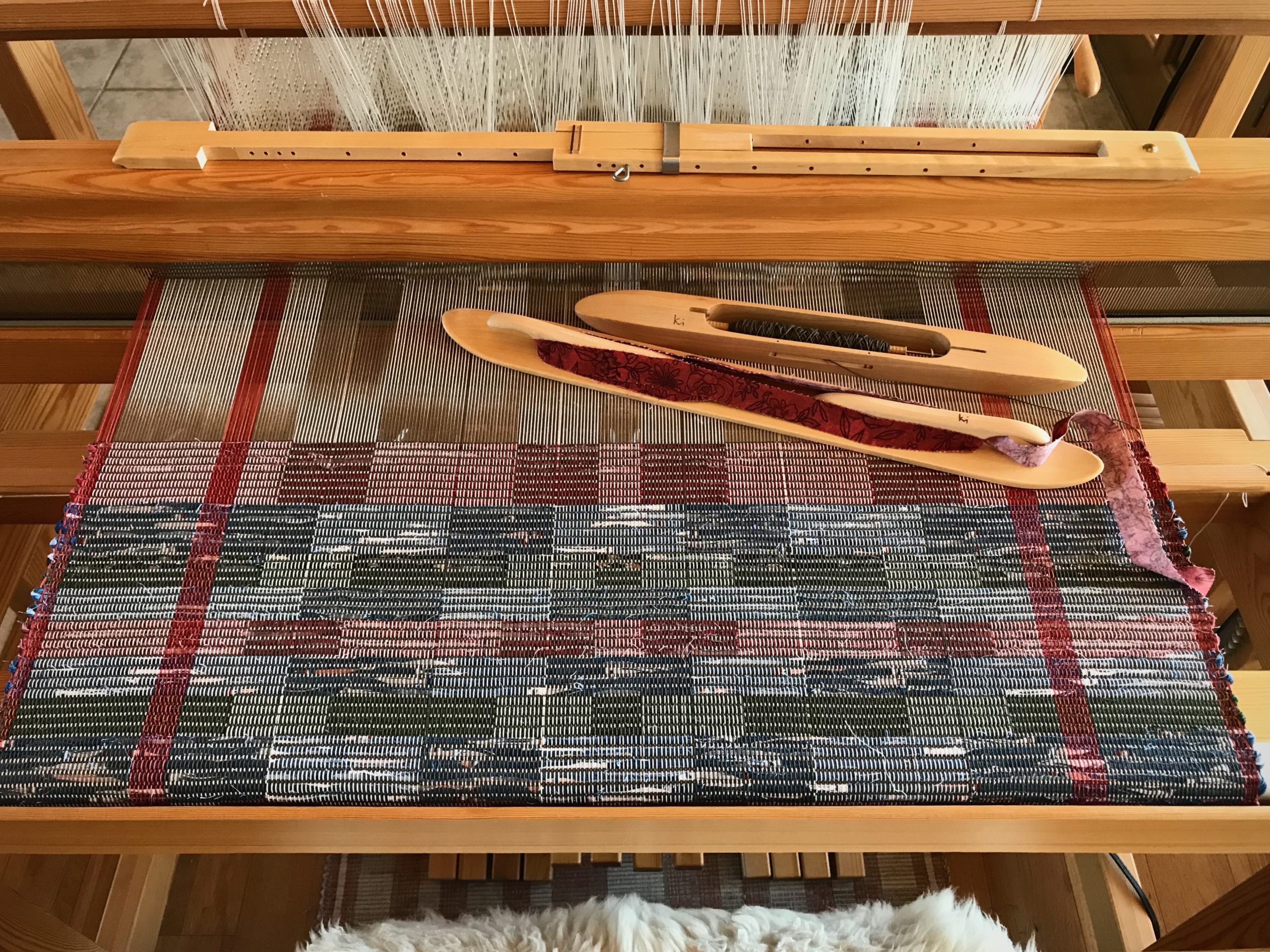
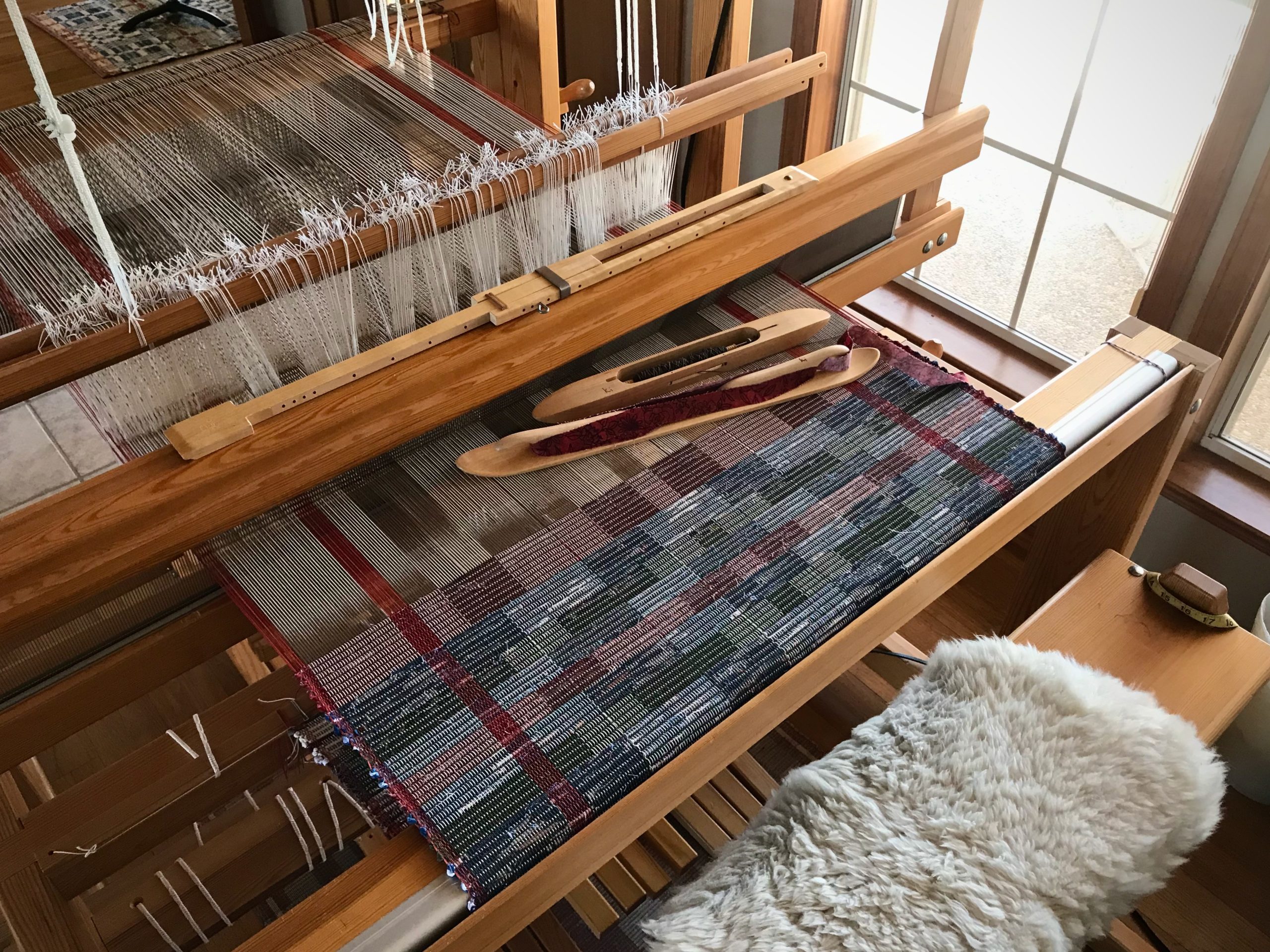
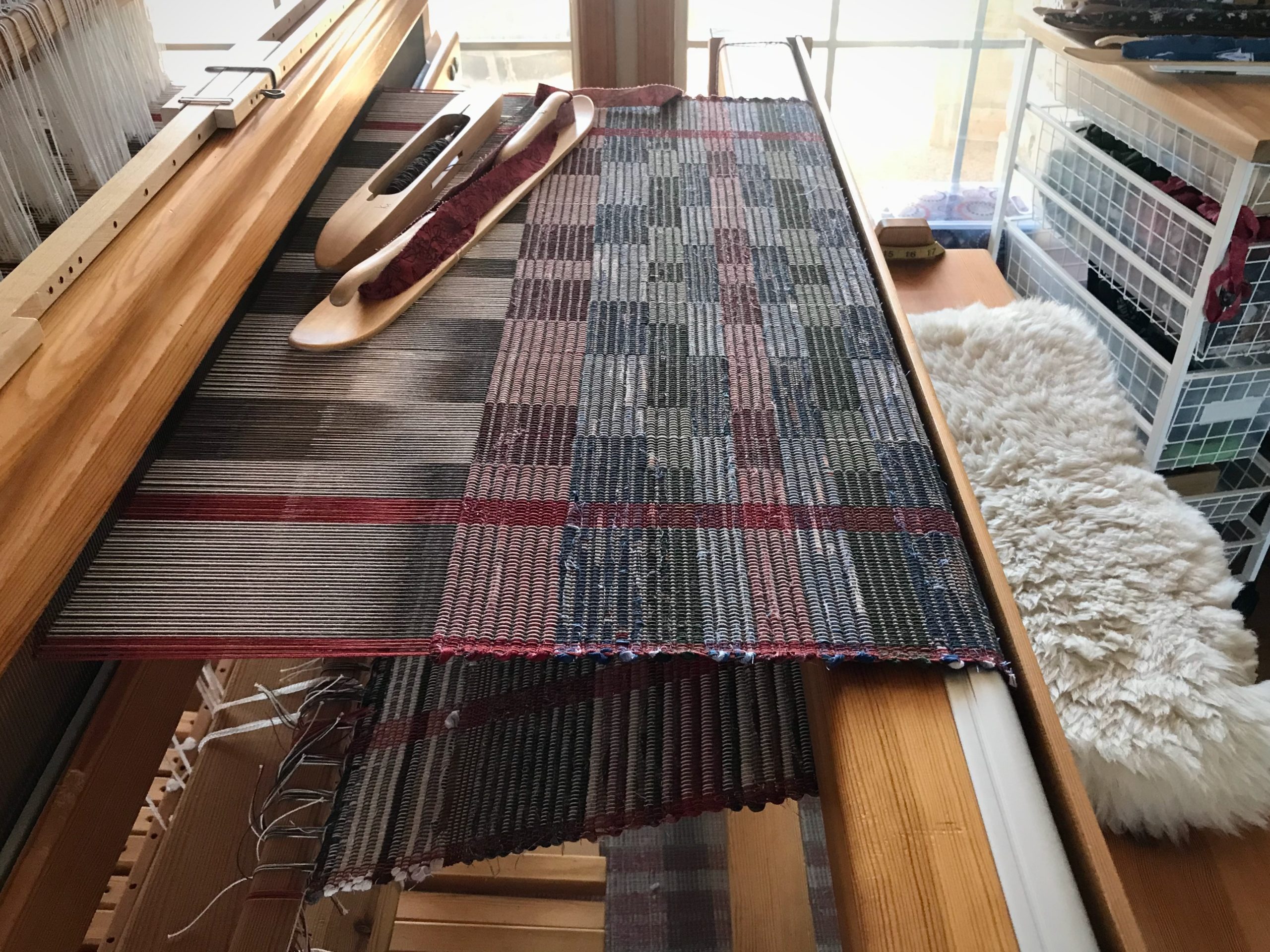
The sun rises every day. And it sets. Who designed the magnificent operation of the rising and setting of the sun? It’s like the rhythmic opening of the shed for passage of the shuttle. At the Grand Weaver’s direction, the fabric of life advances with every new day. Trust in him.
May you pay attention to the rising sun.
Weave into the sunset,
Karen

Amen! And His wonderful creation provides endless inspiration.
Hi Linda, Yes, it does.
Karen
Hi Karen, Another beautiful rug pattern! The striations of white make an interesting look.
I have a question for you, if you don’t mind. When you advance your warp, do you use your pawl release handle. I always get up from my loom and release the warp beam by hand by increments of about 3 teeth of the ratchet and then tighten the cloth beam and go back and release more etc. Is there a better way or am I doing it correctly. As you can tell, I’ve never had a lesson and no one ever mentions if there is a correct way.
Thanks for all you give to the community with your posts.
Maureen
Hi Maureen, I don’t have a pawl release handle on any of my looms, so I always get up to advance the warp. On my Glimakra Standard countermarch loom, this is how I advance the warp. 1. Release the back ratchet. (If the warp is very tight, like I keep it for rag rugs, I loosen the front ratchet just a little bit first so that it’s easier to release the back ratchet.) 2. Advance the warp by turning the wheel for the cloth beam. I advance the warp until the fell line is in the best position for the beater. 3. Tighten the back ratchet. 4. Finish by tightening the front ratchet until the tension is as tight as you want it.
I hope that helps!
Happy weaving,
Karen
Thanks Karen, I wondered if I released the tension on the warp too much by 3 clicks or more, I’ve never actually seen anyone using this type of loom, now I won’t be as concerned. I’ve seen the North American looms using a brake system so I just figured I shouldn’t be releasing too fast.
I appreciate your help.
Hi Karen, Do you make you weft fabric strips or do you order them? Thank you for your instructions, videos and blessings. L.
Hi Linda, I always cut my own fabric strips, using a rotary cutter. I like to use new 100% cotton fabric (such as quilting fabric).
Happy weaving,
Karen
How pretty.
Hope the weather has stabilized in the south. According to the weather reports the second coming is right down the street.
We had a weekend house in Crystal Falls, Michigan. I was up early one morning and watched a mom drop off her toddler at the sitters across the street. He was barefoot as she lugged him over the snow banks. She came back out to retrieve his boots after a few minutes.
My husband grew up about 30 miles from there.
I’m going to guess that I am as comfortable with hot and humid summers as the south is with snow and cold. Icy, now that’s a whole other issue. That is definitely hunker down weather.
In the meantime, weaving is a good way to pass the day.
Hi Nannette, The ice is beginning to melt. Around here, the cold doesn’t usually last too long. I’m happy with that.
Karen
Hi Karen,
I love your rug!! And your way of sharing His light shining in your life.
I’d like to try Rep weave. When you say you are designing at the loom I understand the dark vs light but how do you get the “squares” of green? Do you do this in the wrapping of your shuttle?
Hi Ginger, the geometric aspects of rep weave, such as the squares of green, are produced by the threading. It always seems amazing to me that I can have one color of weft all the way across, but because of the block threading, geometric designs show in the cloth.
This spaced rep weave is only four shafts and four treadles, but because of the thick weft and thin weft used in rep weave, I am able to have 4 different blocks, plus plain weave. Each of those blocks raise (and lower) a certain set of ends, and thus we have capability of these lovely patterns with so few shafts. It’s pretty amazing!
Karen